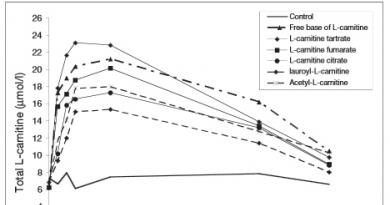Vitamin C is a water-soluble vitamin. In fact, several forms of this substance are combined under this general name - ascorbigen, isoascorbic acid, ascorbyl palmitate, calcium ascorbate, etc.
In the old days, during long journeys, with a lack of vitamin C in the diet, people developed a disease called scurvy, and translated into Latin as “sorrow.” The name “ascorbic acid” comes precisely from this word, which means “anti-scurvy.”
Vitamin C is highly soluble in water and alcohol solutions, inactivated in alkaline and neutral media, and quite stable in slightly acidic media. In general, this is a very unstable substance that quickly breaks down at elevated temperatures upon contact with metals. Prolonged soaking of products leads to the transfer of most of the ascorbic acid into water, and after 2-3 months of storing fresh vegetables and fruits, half of the vitamin contained in them is destroyed.
Most vitamin C is found in foods of plant origin - fruits, berries, vegetables and herbs. They can contain it in oxidized, free and bound forms. In the bound state, ascorbic acid is absorbed much less well, and in the oxidized form its activity is the same as in the free form.
- Brussels sprouts – 120;
- Sweet green pepper – 150;
- Ground tomatoes – 100;
- Orange – 60;
- Fresh rose hips – 470;
- Black currant – 200;
- Horseradish – 55;
- Cranberry – 15;
- Sea buckthorn – 200;
- Spinach – 55;
- Parsley greens – 150;
- Sauerkraut – 30;
- Garden strawberries – 60;
- White cabbage – 45;
- Antonovka apples – 30;
- Lemon – 40;
- Mandarin – 38;
- Parsley root – 35;
- Fresh chanterelles – 34;
- Rutabaga – 30;
- Cherry – 15;
- Gooseberries – 30;
- Radish – 29;
- Full-fat kefir – 0.7;
- Fresh green peas – 25;
- Raspberries – 25;
- Radish – 25;
- Quince – 23;
- Potatoes – 20;
- Bean pods – 20;
- Lingonberry – 15;
- Salad –15;
- Apricots – 10;
- Bananas – 10;
- Onions – 10;
- Watermelon – 7.
Heat treatment destroys up to 90% of vitamin C in foods. During long-term transportation of fruits and vegetables from their place of growth, the vitamin C content in them also decreases. This does not happen if the food is quickly frozen before transportation. To preserve ascorbic acid in them for as long as possible, you should store them in a cool and dark place.
Vitamin C intake standards
The need for ascorbic acid differs at different periods of life; it is higher in living conditions in the Far North during pregnancy and breastfeeding, under stress and physical activity, and in the presence of bad habits.
Children in the first six months of life require 30 mg/day of ascorbic acid, from 6 to 12 months – 35 mg/day, from 1 to 3 years – 40 mg/day, from 4 to 10 years – 45 mg/day.
Boys from 11 to 14 years old need 50 mg of ascorbic acid per day, men under 50 years old 60 mg/day, over 50 years old - 70 mg/day.
For girls aged 11-14 years, 50 mg/day of ascorbic acid is enough, for women under 60 years old, 60 mg/day; during pregnancy, the need increases to 100 mg/day, during lactation up to 120 mg/day.
The role of ascorbic acid in the body
The role of vitamin C in the body can hardly be overestimated; it is involved in many important processes in the body:
- Takes part in the formation of collagen - the main component of connective tissue;
- Makes the walls of blood vessels stronger;
- Increases immune defense;
- Reduces cholesterol;
- Participates in the synthesis of adrenaline, in the metabolism of folic acid;
- Protects the body from oxygen free radicals;
- Reduces the harmful effects of excess sugar;
- Improves tissue regeneration;
- Increases resistance to stress;
- Stimulates the conversion of ferrous iron into trivalent iron, which is better absorbed by the body.
Signs of Vitamin C Deficiency
In the case of hypovitaminosis, the body's resistance to infectious diseases decreases, the appearance of the skin and hair worsens - the skin becomes excessively dry, flabby, wrinkles appear, pinpoint hemorrhages in the area of the hair follicles, hair falls out easily and becomes dull.
Vitamin C deficiency can be recognized by the following symptoms:
- Increased bleeding of the gums, hemorrhages into the subcutaneous tissue (“bruises”);
- Pain in joints and muscles;
- Apathy, irritability, fatigue;
- Poor healing of wounds and cuts;
- Reduced blood pressure.
Hypovitaminosis predisposes to obesity.
Signs of excess vitamin C
Ingestion of large doses of ascorbic acid causes its overdose, which manifests itself in a deterioration of neuromuscular transmission, and hence increased fatigue. Coordination of movements and their coordination with the visual analyzer are impaired. Malfunctions of the pancreas and liver occur, which provokes digestive disorders. Excess ascorbic acid acidifies the urine and can cause precipitation of urates and oxalates.

Use of vitamin C for medicinal purposes
Ascorbic acid is used in treatment regimens for allergic diseases, acute respiratory viral infections and colds, herpes, obesity, depression, increased anxiety, hyperactivity syndrome, atherosclerosis, osteochondrosis, osteoarthritis, anemia, alcoholism and others.
It is known that a lack of vitamin C provokes the development of cancer. The vitamin is taken to increase physical and emotional stability. Its doses are individual depending on age and disease. For prevention, adults take 50-100 mg of ascorbic acid after meals once a day. The average therapeutic dose is 50-100 mg 3-5 times a day. Preparations based on ascorbic acid for oral administration and solutions for intravenous and intramuscular administration have been created.



